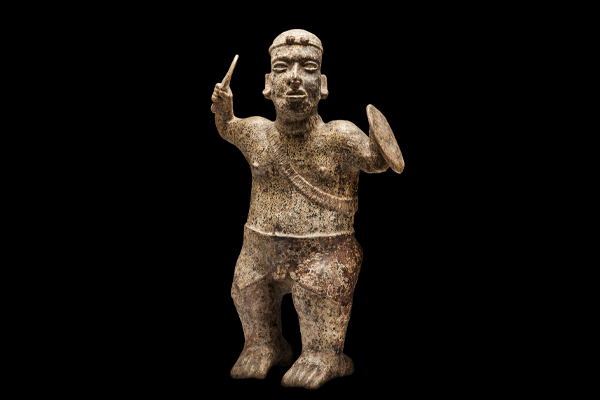
HOME / PUBLICACIONES / Pasajes de Investigación / Teuchitlán

Teuchitlán
In the valleys and lake basins of Magdalena and Etzatlan, near the Tequila volcano in Jalisco, a unique architectural tradition in Mesoamerica developed with structures known as “guachimontones”. These structures consisted of a circular courtyard surrounded by a platform with rectangular structures on which one or more houses were built. This tradition developed between 350 BC and 500 AC and extended to bordering areas in Zacatecas, Nayarit, and Colima. Some of its better-known settlements include Teuchitlan, Huitzilapa, Llano Grande, Navajas, and Santa Quiteria in Jalisco; Potrero de la Cruz in Colima, and La Florida in Zacatecas.
In Teuchitlán there were large "guachimontones", some more than 100 meters in diameter. In the center of these complexes, there were altars and stepped conical platforms with evidence of wooden posts for various rituals, symbolizing the vertical axis that connected and communicated the different levels of the cosmos. Around these circular complexes, there were plazas and residential spaces with remnants of hearths and grinding implements. There were also ball courts, one of them measuring a total length of 111 meters, making it the largest known ball court for that period.
Beneath some of the guachimonton structures, they constructed shaft tombs, some of them quite large, such as the one in Huitzilapa, Jalisco.